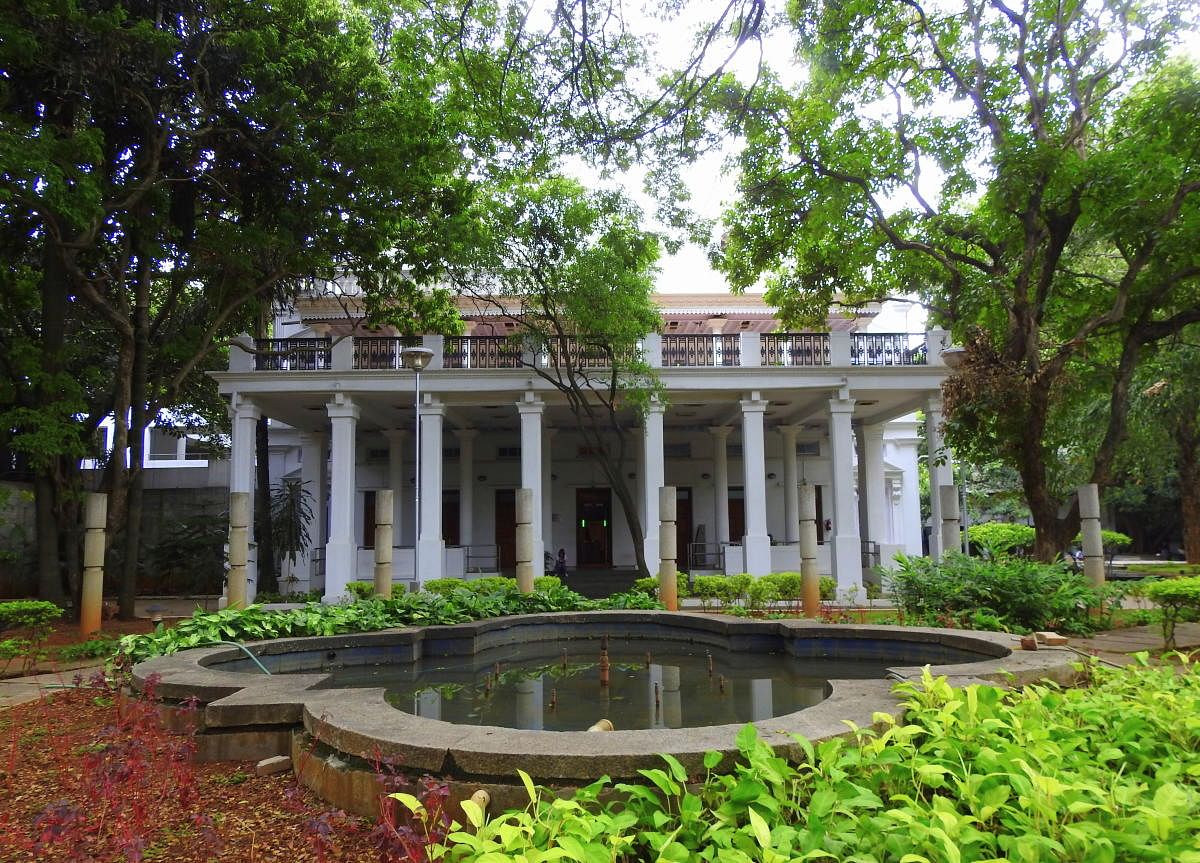NGMA: Once home to royals and the moneyed elite

The National Gallery of Modern Art (NGMA) is one of Bengaluru’s most beloved cultural centres. The building that houses the gallery has a fascinating history. If it could tell us its own story, it would be a dramatic tale of princes and paupers, banquets and balls, abandonment and revival.
The story of the Manikyavelu Mansion as it is now known, begins when it was built by the well-known merchant Haji Sir Ismail Sait, who named his sprawling bungalow ‘Ismailia’.
‘Ismailia’ was a grand, two-storeyed, brick and mud-plastered bungalow that stood on a slight rise in a huge compound. The entrance was through an unusually large and imposing colonnaded porch and veranda. We do not know exactly when Sait built it but ‘Ismailia’ featured several Renaissance Revival details that were popular from the 1890s to the early 1900s — a symmetrical façade, dentilled cornices, a parapet along the roofline, and pedimented windows.
Sometime in the early 1900s, the then Yuvaraja of Mysore, Kanteerava Narasimharaja Wadiyar, bought Ismailia. This was also the time when several bungalows near Bangalore Palace were bought by the erstwhile Mysore royals. Princess Krishnarajammanni, for example, bought Melville House, also on Palace Road, in 1900.
Rajachandra Urs, family historian of the Wadiyars, shares that the building underwent some repairs and modifications. “As per records, there were minor improvements to the kitchen and gate shutters in 1917. Improvements to the dining hall were to be undertaken when the Yuvaraja was on tour,” he says.
Less than a decade later, the building changed hands again, this time going to a businessman named V Manickavelu Mudaliar.
Switching hands
Manickavelu Mudaliar was born in 1876 and first made his name in the business of hides and leather. When the First World War impacted that trade, Mudaliar switched over to prospecting and mining chrome, copper and manganese, soon becoming Mysore’s biggest exporter of chrome ore to the UK and USA. He also established the Mahalakshmi Silk and Woollen Mills in the 1920s.
Mudaliar moved into his new home in the mid-1920s and renamed it ‘Manickavelu Mansion.’ Mudaliar was known for his business acumen and his large-heartedness, as well as his fondness for the good life. As a host, his hospitality was legendary; it was said that no one who came to his door was ever turned away. Mudaliar passed away in 1939 and his son inherited the mansion.
In 1964, when the family totted up income tax arrears of over Rs 2.6 lakhs, the state government acquired the house. The building was taken over by the City Improvement Trust Board, and later the Housing Board. In the 1970s and early 1980s, Manickavelu Mansion housed the UN’s Asian and Pacific Regional Centre for Transfer of Technology.
And then for a few years, the building stayed unused, devoid of life save for the plants that grew surreptitiously in the cracks on the roof and with wild abandon in the vast garden.
An abode of art
The idea for setting up the National Gallery of Modern Art in this 3.5 acre campus was first mooted in the 1980s but it was not until the 2000 that a public competition was held to choose an architect to repurpose the premises. The jury chose Venkataramanan Associates, run by architect Naresh Narasimhan.
Narasimhan encountered several problems in the building including seepage, deteriorating plaster, and fallen rafters.
But he was firm that he would retain the old building, that he would in fact highlight it “by treating it like a diamond, a precious jewel.” This was the reason he introduced the reflecting pool next to the building, “so that it reflected this jewel,” he says. He also refused to cut any of the beautiful trees.
The dilapidated old kitchens and stables towards the back of the garden were pulled down. The auditorium — added when the bungalow was the UN’s centre for technology transfer — was modified. Narasimhan also added a library, workshop spaces, café, gift shop, and administrative offices. The idea was to see that the place became culturally vibrant, “a museum, not a mausoleum,” he says.
The NGMA opened in the renovated and repurposed building, now called the Manikyavelu Mansion, in February 2009. It has since become one of the city’s cultural hubs.
A palatial house that once echoed with laughter and music once again reverberates with life.
(The writer is the author of ‘Discovering Bengaluru’ and the Convenor of INTACH’s Bengaluru Chapter)